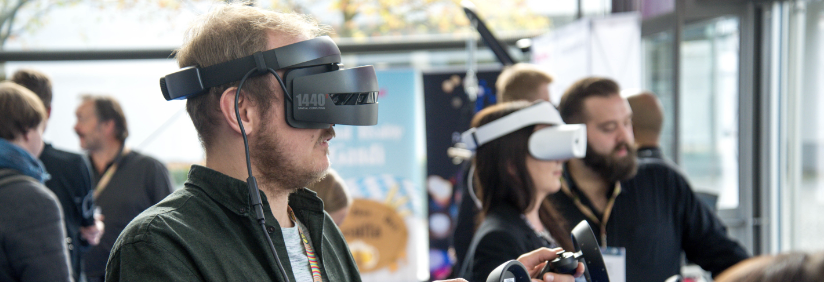Image from BBC
Virtual reality (VR) technology has emerged as a powerful tool that is revolutionising the field of education. By creating immersive and interactive learning experiences, VR has the potential to transform the way students learn and engage with educational content. This article explores the various ways in which VR is being used in education and the benefits it offers to both students and educators.
Enhancing Learning through Immersion
One of the key advantages of VR in education is its ability to create immersive learning environments. By simulating real-world scenarios, students can actively participate in their learning, rather than passively consuming information. For example, medical students can practice surgical procedures in a virtual operating room, allowing them to gain practical experience in a safe and controlled environment.
Furthermore, VR can transport students to historical events or far-off locations, providing them with a first-hand experience that would otherwise be impossible. For instance, students can explore ancient civilizations or visit famous landmarks, bringing history and geography to life.
Improving Engagement and Retention
Traditional teaching methods often struggle to capture and maintain students’ attention. However, VR has the ability to captivate learners by making education more interactive and engaging. Studies have shown that students using VR technology exhibit higher levels of focus and concentration, leading to improved learning outcomes.
Moreover, VR can enhance information retention by stimulating multiple senses. When students can see, hear, and interact with virtual objects, they are more likely to remember the content. For example, a chemistry lesson on molecular structures can be transformed into a three-dimensional experience, allowing students to manipulate atoms and bonds in a way that is not possible with traditional textbooks.
Increasing Accessibility and Inclusivity
Another significant advantage of VR in education is its potential to increase accessibility and inclusivity. VR can bridge geographical barriers, allowing students from remote areas or underprivileged backgrounds to access high-quality education. Additionally, students with disabilities can benefit from VR’s ability to adapt to individual needs and provide tailored learning experiences.
For instance, students with visual impairments can use VR to explore virtual environments and interact with objects through haptic feedback. This enables them to participate in activities that were previously inaccessible, such as dissecting virtual organisms or exploring outer space.
Case Studies and Statistics
Several case studies have demonstrated the positive impact of VR in education. In a study conducted by Stanford University, students who learned through VR achieved significantly higher test scores compared to their peers who used traditional methods. Another study by the University of Maryland found that VR-based training improved students’ understanding of complex scientific concepts.
According to a report by Goldman Sachs, the global market for VR in education is projected to reach $700 million by 2025. This indicates the growing recognition and adoption of VR technology in educational institutions worldwide.
Virtual reality technology is revolutionising education by creating immersive learning experiences, improving engagement and retention, and increasing accessibility and inclusivity. Through VR, students can actively participate in their learning, explore virtual environments, and interact with objects in ways that were previously unimaginable. The positive impact of VR in education is supported by case studies and statistics, highlighting its potential to transform the field of education. As VR technology continues to advance, it holds great promise for the future of education, providing students with new and exciting ways to learn and educators with powerful tools to enhance their teaching.





























+ There are no comments
Add yours